 Editor’s Note: The following article is inspired by real events. I say “inspired” because . . . well . . . obviously a lot of it is totally made up. It should be pretty obvious which bits are pure B.S. Anyway, enjoy. (This took weeks to put together.)
Editor’s Note: The following article is inspired by real events. I say “inspired” because . . . well . . . obviously a lot of it is totally made up. It should be pretty obvious which bits are pure B.S. Anyway, enjoy. (This took weeks to put together.)
**************************************************************************
Chances are, you’ve probably never heard of me.

I don’t have any fancy certifications or accolades. No awards to speak of. You won’t find my name on any Top Ten lists. Nor will you see me behind the counter of a teashop; no vendor would admit knowing me. For you see, I’m a tea blogger, and I exist on edge of this strange industry.
It’s an industry that doesn’t like what I write, nor wants to hear what I have to say. But as irony would have it, whenever something strange happens, who do they send for? That’s right, me. If there’s a weird new tea, or an up-and-coming tea growing region, I’m the guy they call upon to cover it.
But business had been slow, lately. Not sure if folks were keeping their teas close to the hip, or if there were just too many of us tea bloggers running around. Vying for the mythical “piece of the pie”. Either way, nothing interesting had reached my desk in over a month. And I didn’t have the motivation to go look for it. It was almost as if my proverbial inkwell had run dry.
Until one night . . .
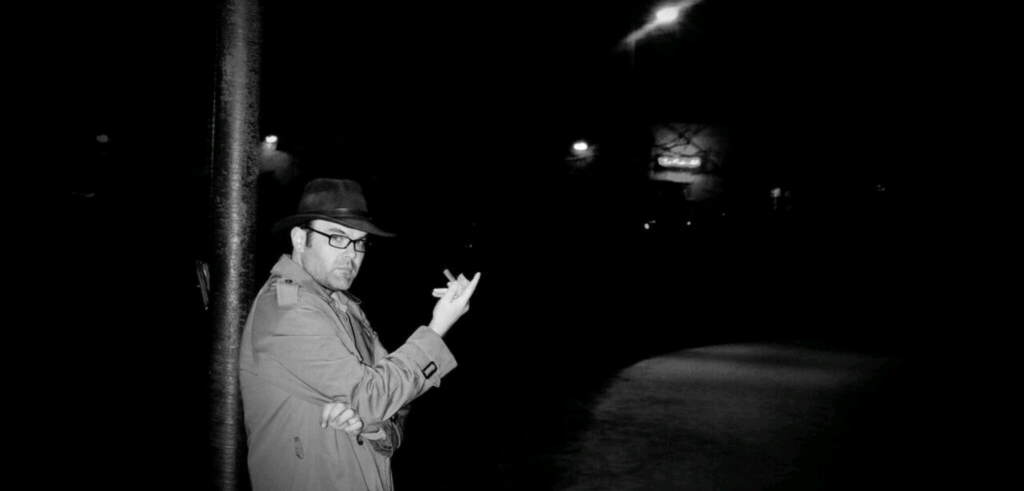
I was hanging out by a lamp post, pretending to smoke a pipe. (Couldn’t afford the tobacco to go along with it.) A woman happened upon me on the crooked, paved path to nowhere. She seemed overdressed for this time of night; for this part of town. And there was something about her that seemed artificial . . . animated, even.

Something about her screamed, Don’t trust her.
But all I could think was . . . well, I wasn’t thinking anything, really.
“Are you the Lazy Literatus?” she asked.
“Who wants to know?” My voice cracked a little bit. I cleared my throat.
“You can call me Beatrice,” she said. Obviously a fake name, but whatever. “I have a tea you might be interested in.”
My eyebrow perked a tad. “From where?”
“Taiwan.”
“Pass,” I said. I’d covered that damn island so often, I might as well have real estate there.
She brought out two nondescript bags. Haven’t a clue where she kept them hidden. Didn’t want to know, either.
Okay, I kinda wanted to know.
“Two black teas,” she began, “made from allegedly wild tea tree cultivars. Indigenous cultivars.”
That was all tea botany talk. I understood enough of it to be really excited. And not just excited that a woman was talking to me.
She continued, “I’m interested in your take on them.”
“What’s in it for me?” I pretended to be nonchalant, trying desperately to hide my excitement.
“Mysterious teas are your ‘thing’, aren’t they?” she countered.
“Touché,” I acquiesced, “but what’s in it for you?”
She stopped to consider her words. “I . . . appreciate your point of view.”
Well, that’s not suspicious, I thought.
I nodded and reached out for the bags. “I’ll take a look.”
She handed me a slip of paper, “E-mail me when you have something conclusive.”
It read: bodhisattva(at)passion(dot)com
What sort of e-mail domain was that? Did she do porn? Tea porn? Best not to think too hard on it.
A few days later, I dove into the bags. Both were labeled in a funny way. One was dubbed “Sample #1S”, while the other was “Sample #2R”. Not sure what the naming scheme meant, but it further made me uneasy. Not uneasy enough to keep me from diving in, though.
For brewing both, I put (what I guessed was) about a heaping teaspoon of wide leaf material to a 6oz. gaiwan. Then I poured them over with water just under a boil. Wait time? Three minutes. Pretty standard fair for a black tea.
Alleged Taiwan Wild Cultivar, Sample #1S
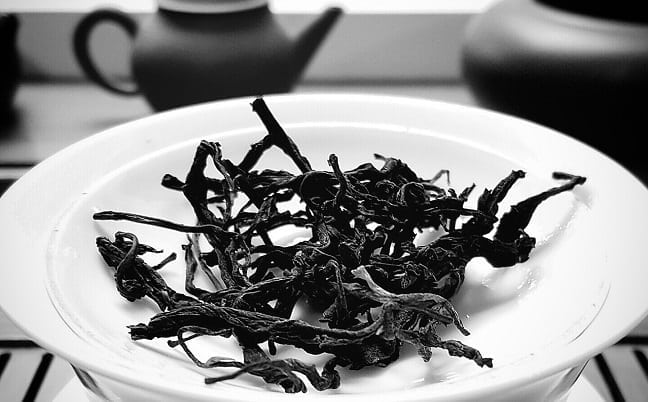
The leaves for this sample were long, and I mean . . . extremely long. I think I’ve only run into three other black teas with leaves this long. Of course, they were all from Taiwan. But these had them all beat. Definitely leaves from lower on the tea bush, or branch—as it were. All were jet black in color, save for a couple that had some tippy ends to them. The smell they gave off was all sweetened nuts, like salted truffles mixed with almond trail mix.
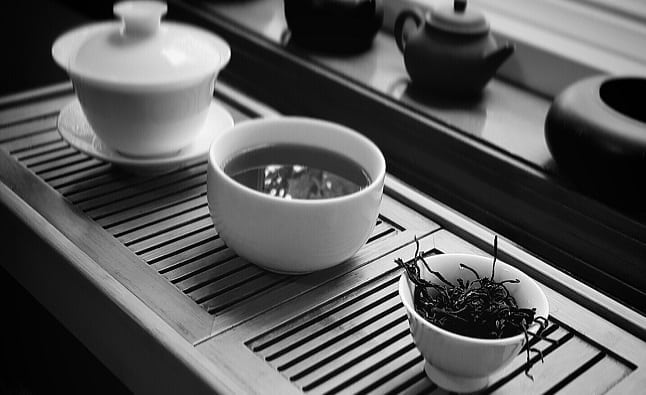
The liquor brewed a lighter copper-red than I was expecting—more Darjeeling second flush crimson than Taiwanese Assam dark. The aroma reminded me of a low-altitude Ceylon, which further confused the issue. Shades of flowers, sweet-wood and nuts prevailed in the scent. The flavor started off a lot like a Ruby 18, alternating between mint and malt, but then did a Tokyo drift skid into the unknown. I can’t quite put my finger on what the top note was. Licking cacaos while they’re still on the vine? Maybe? I dunno, it was weird. Sweet and delicious, sure . . . but weird. The finish was all wood and welcoming, like a Fujian black tea by way of a Keemun.
Alleged Taiwan Wild Culitvar, Sample #2R
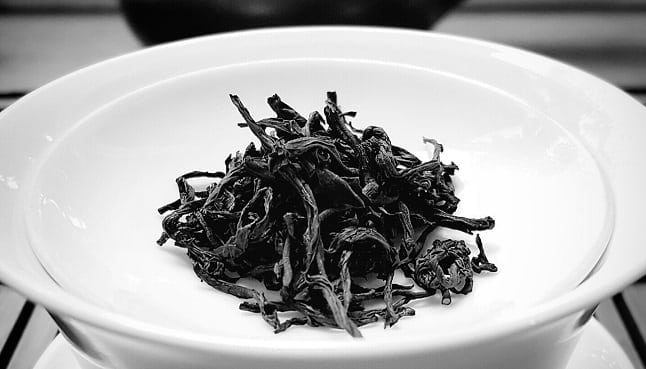
The leaves were just as whole as the first sample, but their cut was more conservative. More Ruby 18-ish, medium-to-large length. Where they differed wildly from any black tea, ever, was the smell. The aroma was straight Grape Nuts Flakes. Yes, the cereal. No, I’m not joking. No, I have no other added nuance than that. No malt, no mint . . . Grape Nuts.
The liquor brewed up about the same color as the last sample, only . . . softer . . . I think?
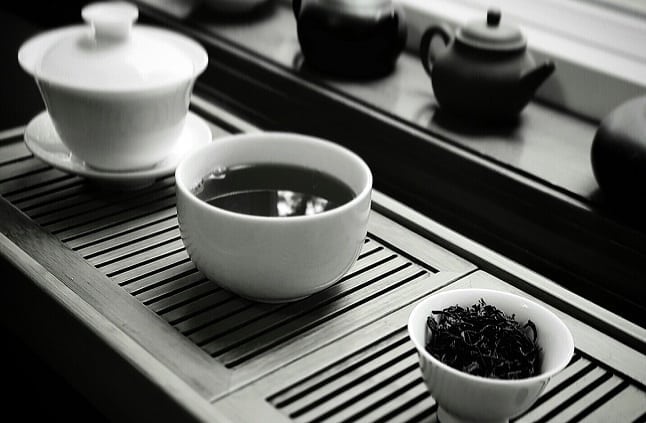
It was still coppery, still dark, but the edges seemed more “velvet blanket” red. I felt like I needed to pet the tea. Heavy pet, even. That perplexing, grape-nutty aroma from the dry presentation was still there, only far more pronounced. There was even a Dan Cong-like sharpness/tartness on the back-whiff. As for flavor . . .
Oh my [INSERT DEITY HERE], what the hell happened to my tongue?!?!
I tried to calm down and started from the beginning. Was there a beginning? Who cares, I had to try.
Like the other sample, it began with a very Ruby 18-ish minty/malty thing. For a second there, it seemed to be reaching for that same strange cacao-like top note. And then the whole experience went completely off the rails. It reminded me a smidge like a Dan Cong black and a Tie Guan Yin black combined . . . but only a smidge. The rest was all Korean oxidized tea, Taliensis weirdness, and . . . other inappropriate experiences that they don’t have words for, yet.
Yes, I enjoyed it.
Both of them, actually.
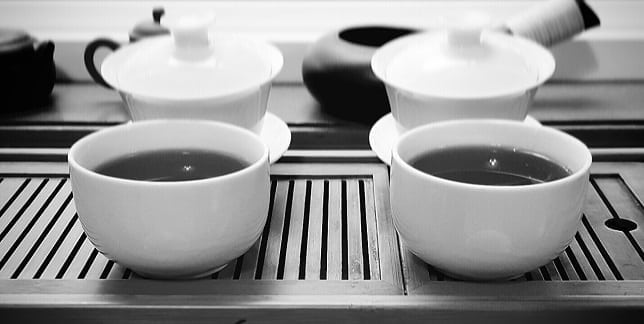
Now that I got the easy-tasting part out of the way, it was time for the hard part—finding out more about what the hell I just drank. For this, I started with the only place a lazy tea writer like me could. I hit the Internet. The first thing that popped up on the search query—“indigenous wild Taiwanese tea”—was a chat thread.
There, I learned that the indigenous cultivar had a name—Shan Cha, literally “mountain tea”. The leaves for the plant were similar to Camellia sinensis var. assamica, but that was where the similarity ended. I needed to dig deeper.

I put out some feelers on social media for any information on “Shan Cha”. People much smarter than me delivered with some very dense reading. And others provided vendor write-ups about finding said “tea” trees in the wild. First, there was an account by the purveyors of Taiwan Tea Crafts, about hunting for the indigenous trees in the wilds of Yuchi, Nantou county. Next, there was a similar article by Eco-Cha, which delved a little bit more into the history of the plant.
With the easy reading out of the way, it was time to chisel away at the denser, more scientific stuff. I was a tea blogger, not a tea botanist. For this endeavor, I turned to a fellow tea geek that could decipher the headier language.
Of the more taxonomic articles, the first came from three gentlemen who published a morphological report in 2007. In it, they asserted that the wild Taiwanese plant was its own variety of Camellia sinensis, specifically var. formosensis. They followed that claim up in 2009 with another article, one where they asserted that—due to new genetic data—the indigenous plant should be categorized as its own distinct species; Camellia formosensis. Those were further followed up by other writers who examined Shan Cha’s lack of genetic diversity when compared with the two main varieties of sinensis tea trees, which further lent credence to the species claim.
All I could conclude from all the readings was this:
There was this type of Camellia tree “native” to Taiwan.
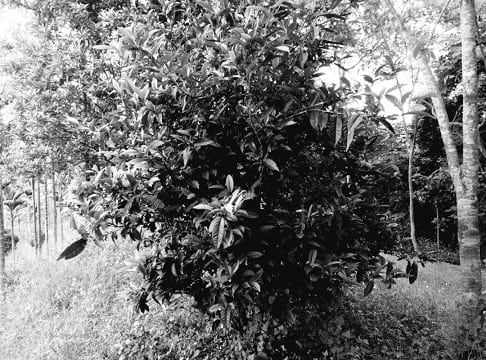
The leaf size was similar to assamica, but characteristically different. The trees were smaller, they matured slower, and the leaf yield wasn’t as bountiful. However, it was still similar enough to assamica that some purported it was a long-lost grand-daddy cultivar that somehow found its way over to Taiwan, either from early Han settlers prior to the 1600s or by way of . . . birds . . . or wind. Or some other act of gods.
It was first mentioned in a botanical sense by those early settlers, and shortly after was mentioned in literature by early Portuguese and Dutch explorers. When the Japanese annexed “Formosa” in 1895, they examined the likelihood of propagating the native plant for black tea production. As a way to compete with Sri Lanka (then Ceylon). Because of the native plant’s low-yield, though, the Japanese—instead—imported assamica trees from territories they already controlled, or from Assam, India proper.
Fast-forward several decades to the 1980s and the now-free(-ish) Taiwanese created new cultivars for black tea production. Some were hybrids of previously cultivated varieties. But others were cross-bred with the supposedly indigenous Taiwanese bush.
By 2003, one of these hybrids—crossed with a Myanmar strain of assamica—was registered by the TRES (Tea Research and Extension Station). The oft-touted and now-famous TTES #18; also known as Ruby 18, a cultivar used for black tea we all knew and lusted over. Around the same time, the native Shan Cha tree was granted protection status by the Taiwanese government.
However, a lot was still inconclusive. Was it its own species, or was it an ancient type of Camellia sinensis var. assamica, or was it originally Camellia sinensis that was so far removed from the original genetic stock, that it might as well be its own species, now? Kind of like how Camellia taliensis was a close cousin to C. sinensis; or how rooibos and honeybush were related.
Until someone did a full map of Shan Cha’s genome, no one would really know for sure. As I put all these heady thoughts to paper, the trusty BBC came out with an article—announcing that the Camellia sinensis genome had finally been mapped. Maybe the time was nigh that the same would happen to all the other closely related species?
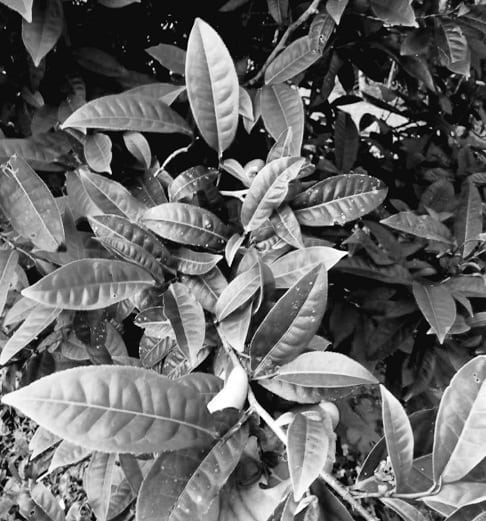
That was about as far as I could go on this. The rest, I left to the bigger movers and shakers of the tea world. Researching this was like researching the entire history of Taiwan. I wasn’t sure “Beatrice” was gonna like that non-conclusion to the case . . . but that was all I had. I e-mailed her.
I got a quick reply:
Meet me at the lamp post. Tomorrow night. 9PM.
—B
What sort of clandestine op was this?!
I did as I was instructed and moseyed out to the lamp. She hadn’t shown, yet. I leaned against the post, brandished the ol’ pipe, and bided my time. Just me and my musings. As I waited there, a thought crawled into my head. This all seems painfully familiar. Have I been down this road before?
Before I could ask myself another question, the world seemed to blur.
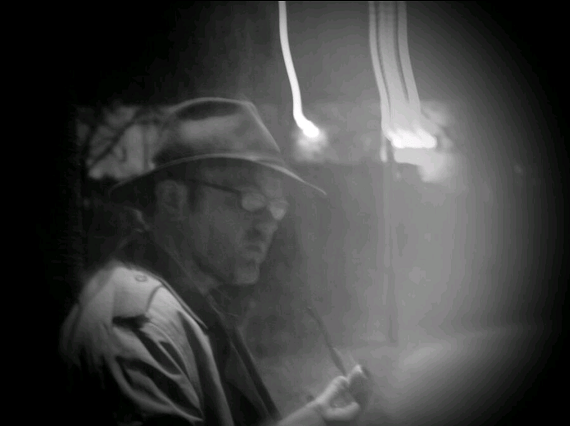
Light stretched, shadows grew darker, and my vision blurred along the edges. Every hair on my body felt a tinge of electricity in the air. As quickly as the feeling came, it subsided. A woman came out of the shadows. Only . . . it wasn’t “Beatrice”.
It was Guan Yin!

The Bodhisattva of Compassion herself.
A little backstory is in order. A few years ago, I wrote a jokey little story about how she had a tryst with a certain famous Scottish botanist—one Robert Fortune. She didn’t take too kindly to it. You know the old saying, “Hell hath no fury like a woman scorned”? That goes double for goddesses. Especially compassionate ones.
I tried to hide my terror. “Come to finish the job?”
“No,” she said, smile never waning, “just to tell you that . . . now, we’re even.”
And then she vanished.
What the hell did she mean by that?
My cell phone vibrated. I clicked it on and looked at the screen. As if by its own accord, it went to a very familiar website. The place where my tea blogging journey began—Teaviews. It was one of my old reviews from 2012.

No wonder this all seemed so familiar. I had been down this road before. Not only that, I drank three different teas made from this wild tree. How could I forget? Was that the point of it all? That all tea journeys come full circle? That I was never going to be an expert; that nothing was ever conclusive?
Whatever . . .
“Well played, goddess,” I said to the night sky. “Well played.”
Tea was a bitter business. Sometimes you got yourself into hot water, sometimes the trail ran cold, or your timing was off completely. In the end, none of that mattered. There was always another steep; always another story. And I’d be there, on the edge of this strange industry . . .

Waiting to write it.
**************************************************************************
Acknowledgements:
I’d like to thank the following people for making this behemoth of a blog possible.
Robert Norman, my brother—for taking awesome photos of me in a public park.
Billy “The Leaf” Dietz—for providing the tea samples and photos of the wild tea trees.
Jo “Scandalous Tea” Johnson—for providing additional reference material.
Greg “Norbu Tea” Glancy—for providing even more reading, putting up with my constant questions for weeks, and for jogging my memory about the old tea samples he provided.
Eric “Tea Science Wizard” Scott—for helping me make heads and/or tails of the harder reading.
And thank YOU for reading.
You all rock.
Leave a Reply